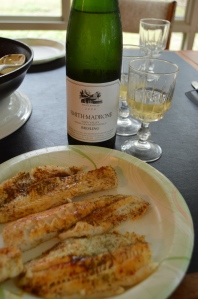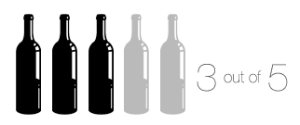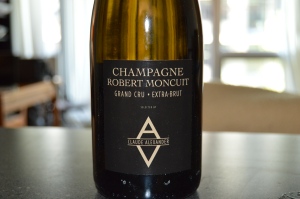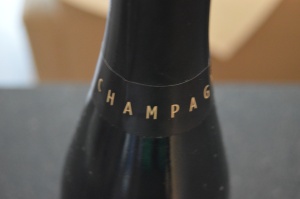Strangely I find that I love fishing.
A born-again city girl (I grew up on a cattle farm), it took me 10 years to go up to my parents’ lake cabin in the Lake of the Woods (since the drive is one that measures between 9 and 10 hours), and anytime I came back from DC, all I wanted to do was to relax away from the noise, traffic and ladder climbers.
Having gone up twice in one summer, I recognize I was missing out. Serene, beautiful and pristine, it’s exactly where one should go to escape. And with any good escape, one should bring wine. In the past I brought wine in case it had to substitute for the lack of fish; here, one brings wine to accentuate the beauty, enjoy silence around conversation and punctuate the fish. (Catching fish is always a given here).
Smith Madrone Riesling, Napa Valley 2008 (12.5%) was the wine for freshly caught, paprika-seasoned walleye, broccoli and kale salad.
The flavors of Smith Madrone Riesling included apple, stone fruit and melon. It was a dry, medium acid wine with a good amount of minerality that helped tame the could-be harsh smells and tastes of fish and vegetables. It was nice—like a nap on Sunday one takes inadvertently watching a round of golf on T.V., but it was short lived. I liked it, but could take a pass if a Riesling with a German background came along.
Purchased at Cork Dork for just under $20, I would say buy it if in doubt, but I’m not going to lose sleep over it, unless it’s a few minutes for a nap.






